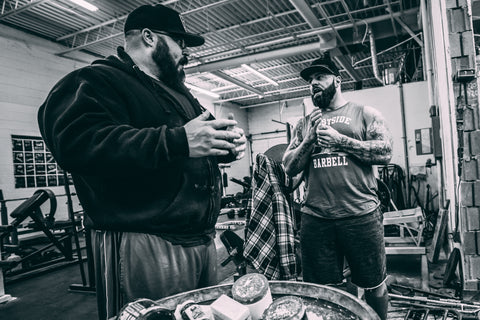Building Optimal Back Strength

No matter the sport you train for, there is no doubt that having a strong back is necessary to improve strength and physical ability. The muscles of the back and trunk work together to provide the spinal support and stability needed to display maximal strength. Focusing on strengthening the cervical, thoracic, and lumbar spine muscles, along with the erector spinae (paraspinal muscles) and the trunk muscles, will improve all strengths and lower the risk of spine-related injuries.
The Importance of a Strong Back
As mentioned above, a strong back will improve sports performance and lower the risk of back-related injuries. Aside from that, the muscles of the back support and stabilize the spine leading to improved nerve signal output. One of the best analogies I've heard regarding the importance of back and trunk strength is the comparison of the spine and nervous system to a water hose. The more the spine falls into a sub-optimal position, the nerve signal is affected, leading to a loss of muscle activation and strength output. It is a highly simplistic explanation of the process, but it highlights the importance of having a strong back.
Therefore, if you want to be as strong as possible, you must focus on building the strongest back you can build. If you're going to lift heavy weights, you must develop the back and trunk strength necessary to keep the pelvis and spine as close to neutral as possible when loaded. One of the most important aspects of lifting heavy weights is having the strength necessary to stabilize the pelvis and spine, maintaining a neutral position throughout a movement.
The Big Three
When it comes to building a strong back, three exercises should show up regularly in your programming; barbell rows, goodmornings, and deadlifts. These three exercises, along with their many variations, are proven ways to build a back capable of lifting the heaviest weights you can physically tolerate.
Athletes should utilize barbell rows in almost every upper body training session. There are many variations to choose from, including regular bent-over rows, Pendlay rows, seal rows, or chest-supported rows. Bent over rows and Pendlay rows will generally be performed using heavier weights, with rep ranges between 5-10 reps depending on the training day. Seal rows and chest-supported rows are typically performed for higher volume sets of 12-15 reps.
Goodmornings and the variations of them are the most significant contributors to overall back and posterior chain strength. When it comes to building powerful hamstrings, glutes, paraspinal muscles, and all of the other muscles responsible for supporting the spine, no exercise can compare to the goodmorning. These exercises are performed as primary or accessory exercises on lower body training days.
At Westside, we recommend rotating through SSB goodmornings, Cambered Bar goodmornings, and Bow Bar goodmornings regularly. When used as the main exercise, lifters should work up to top sets of 3-5 reps. When used as an accessory exercise goodmornings can be performed for multiple sets of 5-8 reps using heavier weights or 10-12 reps with lighter weights.
Deadlifts and deadlift variations are the final piece to the puzzle regarding back strength. As we have known for a long time, if you want to develop a strong back, you will have to deadlift. At Westside, aside from regular deadlifts, we frequently use deficit deadlifts from various heights, rack pulls, and block pulls. These exercises can be used as main exercises or accessory exercises on lower body training days. Check out Louie's article on How to Start a Deadlift.
When used as the main exercise, we will typically work up to a top set of 1-3 reps. When used as accessory exercises, we usually pull between 5-10 reps. You can add accommodating resistance, change deficit or block heights, or alternate between conventional and sumo stances to change the training effect.
Build Your Back, Build Your Total
No matter the lift, one thing is for sure; you need to keep your spine stabilized. Not only that, you need to have a back that is strong enough to meet the demand you place upon it while maintaining a high level of durability.
The posterior muscles responsible for supporting the spine are involved in all three powerlifts. Some debate the role strong lats and back muscles play in the bench press. Still, it is reasonable to argue that a strong back provides an anchor to allow the anterior muscles in the bench press the stability needed to produce maximum strength and power. Additionally, strong rear delts, rhomboids, and traps have a tremendous impact on overall pressing strength.
A properly trained back is the foundation that great strength is built upon. If the goal is to be as strong and stable as possible, you must focus on strengthening the muscles responsible for stabilizing the spine. When performing back-focused exercises, be sure to execute the movements safely. Always take intelligent jumps in weight and leave a set in the tank when in doubt. Remember, the goal is to stimulate, not annihilate.
Work Sourced:
The Westside Barbell Book of Methods; by Louie Simmons
Supertraining; by Mel C. Siff and Yuri Verkhoshansky
Science and Practice of Strength Training; by Vladimir M. Zatsiorsky and William J. Kraemer





